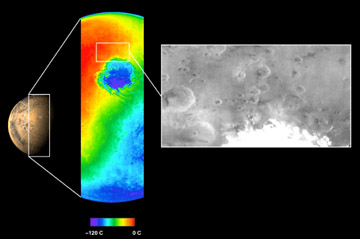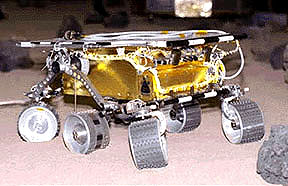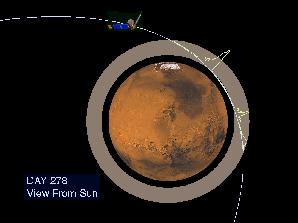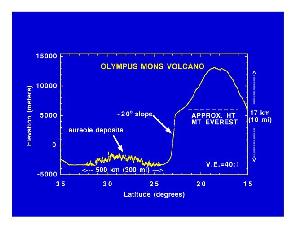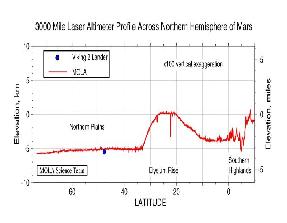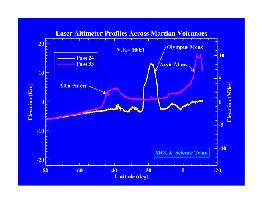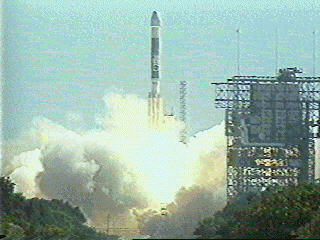Mars Odyssey Image List
The Mars Odyssey spacecraft

This is an artist's depiction of the Mars Surveyor 2001 Orbiter showing the Orbiter as it reached Mars. (Courtesy of NASA)
Images from the Mars Odyssey

This is the Mars Odyssey's first picture. It took this picture of the Earth and Moon on April 19th, 2001, in celebration of Earth day. The image was taken as part of the calibration process for the thermal emission imaging system, the camera system that is one of three science instrument packages on the spacecraft. (Courtesy of NASA/JPL)

This image shows both a visible and a thermal infrared image taken by the thermal emission imaging system on NASA's 2001 Mars Odyssey spacecraft on November 2, 2001. The visible wavelength image, shown on the right in black and white, was obtained using one of the instrument's five visible filters. The spacecraft was approximately 22,000 kilometers (about 13,600 miles) above Mars looking down toward the south pole when this image was taken. The thermal infrared image, center, shows the temperature of the surface in color. The circular feature seen in blue is the extremely cold martian south polar ice cap. The instrument measured a temperature of minus 120 degrees Celsius (minus 184 degrees Fahrenheit) at this ice cap. (Courtesy of NASA/Jet Propulsion Laboratory/Arizona State University)
Go back to Mars, Pluto, Mercury, Saturn, Neptune, Venus, Moon, Jupiter, Asteroids, Comets, Sun, Missions, Uranus, Astrophysical Objects, Mariner Images, Viking Images, Mars Pathfinder Images







